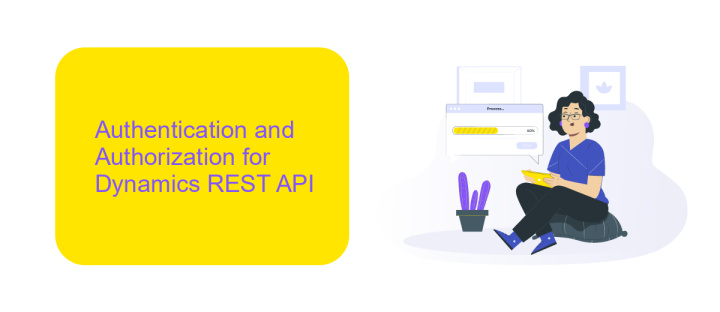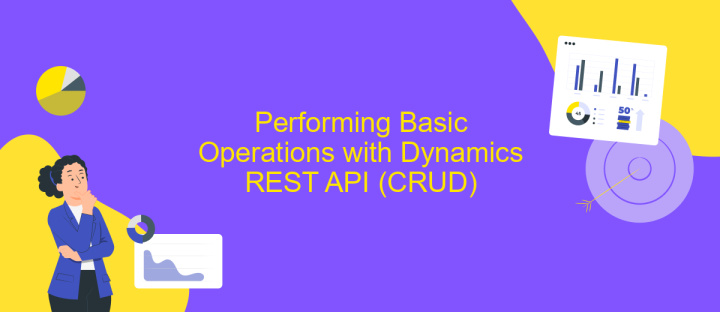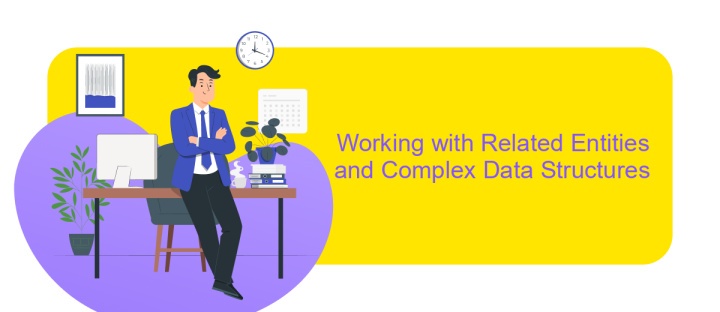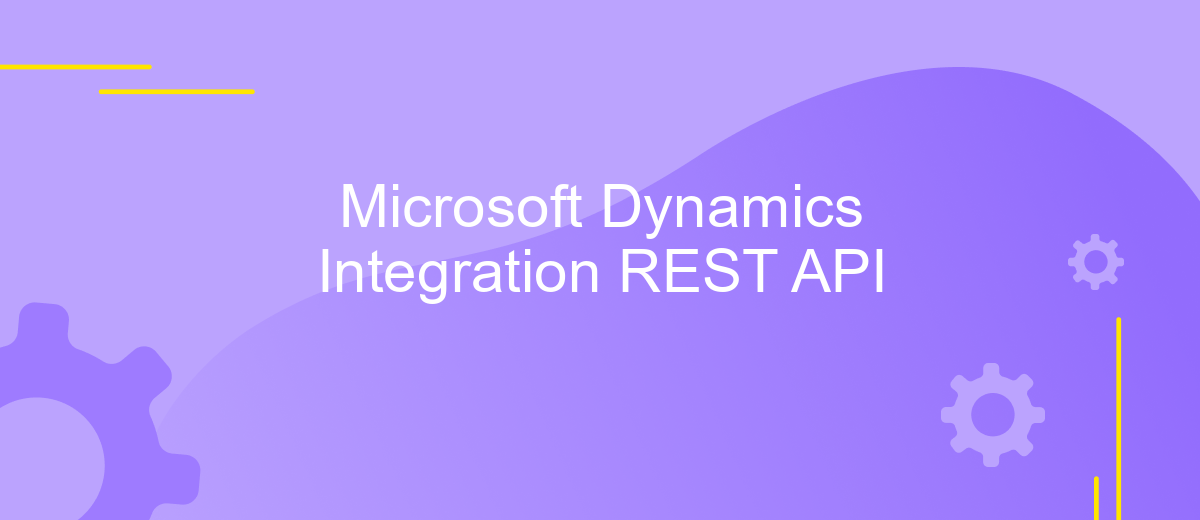Microsoft Dynamics Integration REST API
Microsoft Dynamics Integration REST API offers a robust solution for seamlessly connecting and automating business processes across various platforms. By leveraging RESTful services, it enables efficient data exchange and integration with external applications, enhancing operational efficiency and decision-making. This API empowers businesses to customize workflows, improve data accuracy, and streamline operations, making it an essential tool for organizations aiming to optimize their use of Microsoft Dynamics products.
Introduction to Microsoft Dynamics Integration REST API
Microsoft Dynamics Integration REST API is a powerful tool that enables seamless interaction between various applications and Microsoft Dynamics 365. By leveraging this API, businesses can enhance their workflows, automate processes, and ensure data consistency across platforms. It serves as a bridge, allowing external systems to communicate with Dynamics 365, thus facilitating efficient data exchange and integration.
- Streamlined data synchronization between Dynamics 365 and external applications.
- Automated workflows to enhance operational efficiency.
- Secure and reliable data exchange through RESTful services.
- Scalable integration solutions tailored to business needs.
With the Microsoft Dynamics Integration REST API, organizations can unlock the full potential of their CRM and ERP systems. It provides a flexible and scalable approach to integration, ensuring that businesses can adapt to changing requirements and technological advancements. By utilizing this API, companies can achieve greater transparency, improve customer experiences, and drive growth through enhanced data insights and operational agility.
Authentication and Authorization for Dynamics REST API

To access the Microsoft Dynamics REST API, it is crucial to implement robust authentication and authorization mechanisms. Authentication verifies the identity of the user or application attempting to access the API, typically utilizing OAuth 2.0 protocol. This involves obtaining an access token from Azure Active Directory, which acts as a key to access Dynamics resources. The user or application must be registered in Azure AD, and permissions must be granted to access the necessary Dynamics data.
Authorization, on the other hand, determines what actions an authenticated user or application can perform on the Dynamics platform. This is managed through role-based access control (RBAC) within Dynamics, ensuring users have appropriate permissions to access specific data and perform necessary operations. For seamless integration, services like ApiX-Drive can be employed to facilitate the connection between Dynamics and other business applications, simplifying the authentication process and ensuring secure data exchange. By leveraging these mechanisms, businesses can ensure secure and efficient interactions with the Dynamics REST API.
Performing Basic Operations with Dynamics REST API (CRUD)

Integrating with Microsoft Dynamics via the REST API allows developers to perform basic CRUD operations—Create, Read, Update, and Delete—on data stored within the Dynamics platform. These operations are fundamental for managing business data effectively and ensuring seamless data flow between external applications and Dynamics.
- Create: To add new records, send a POST request with the necessary data fields to the appropriate Dynamics entity endpoint. Ensure the JSON payload adheres to the schema defined by Dynamics.
- Read: Retrieve existing data by sending a GET request to the entity endpoint. You can filter, sort, and select specific fields using OData query parameters to refine the data returned.
- Update: Modify existing records by sending a PATCH request to the entity endpoint, including the unique identifier of the record and the fields to be updated.
- Delete: Remove records by sending a DELETE request to the entity endpoint with the unique identifier of the record you wish to delete.
By mastering these CRUD operations, developers can efficiently manage data within Microsoft Dynamics, enabling robust integration solutions that enhance business processes and data accuracy.
Working with Related Entities and Complex Data Structures

When integrating with Microsoft Dynamics using the REST API, handling related entities and complex data structures is crucial for seamless data management. Understanding the relationships between entities allows for efficient data retrieval and manipulation, ensuring that your integration processes are both robust and scalable.
To work with related entities, you need to utilize the OData query options provided by the Dynamics API. These options enable you to expand related entities and fetch nested data in a single request, reducing the need for multiple API calls and improving performance. Additionally, managing complex data structures requires careful mapping of fields and relationships to maintain data integrity.
- Use the
$expandquery parameter to include related entities in your API requests. - Leverage
$selectto specify the exact fields you need, optimizing data transfer. - Implement error handling to manage potential issues with complex data structures.
- Utilize batch requests to handle multiple operations in a single API call, enhancing efficiency.
By following these best practices, you can effectively manage related entities and complex data structures in Microsoft Dynamics, ensuring your integration is both efficient and reliable. This approach not only streamlines data processes but also supports the scalability of your business operations.
Best Practices and Troubleshooting for Dynamics REST API Integration
When integrating Microsoft Dynamics with REST API, it is crucial to adhere to best practices to ensure seamless functionality and performance. Firstly, always authenticate API requests using OAuth 2.0, as it provides a secure method for client-server communication. Additionally, implement proper error handling to catch and manage exceptions effectively. This includes setting up retry logic for transient errors and logging errors for troubleshooting. It's also advisable to use pagination when dealing with large datasets to optimize data retrieval and reduce load times.
In troubleshooting, ensure that API endpoints are correctly configured and that the necessary permissions are granted. Common issues often arise from incorrect endpoint URLs or authentication failures. Utilizing integration tools like ApiX-Drive can simplify the setup process by providing a user-friendly interface and automated workflows. This tool can bridge the gap between different applications, ensuring data synchronization and reducing manual intervention. Regularly monitor API usage and performance metrics to identify potential bottlenecks and optimize accordingly.
FAQ
What is Microsoft Dynamics Integration REST API?
How do I authenticate with Microsoft Dynamics Integration REST API?
Can I automate data synchronization between Microsoft Dynamics and other platforms?
What are the common challenges when integrating with Microsoft Dynamics using REST API?
How can I test Microsoft Dynamics REST API integrations before deploying them?
Time is the most valuable resource in today's business realities. By eliminating the routine from work processes, you will get more opportunities to implement the most daring plans and ideas. Choose – you can continue to waste time, money and nerves on inefficient solutions, or you can use ApiX-Drive, automating work processes and achieving results with minimal investment of money, effort and human resources.

